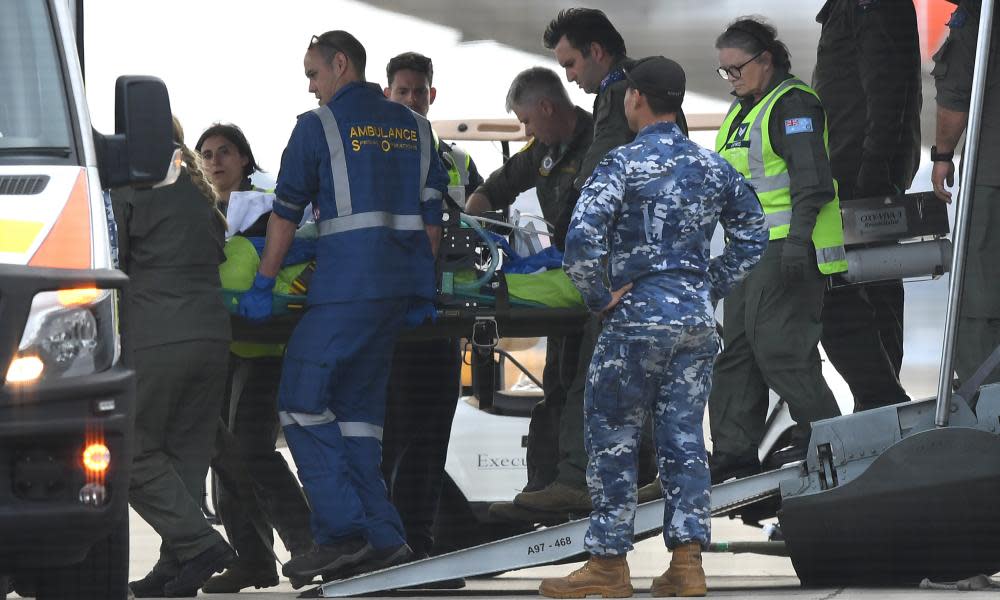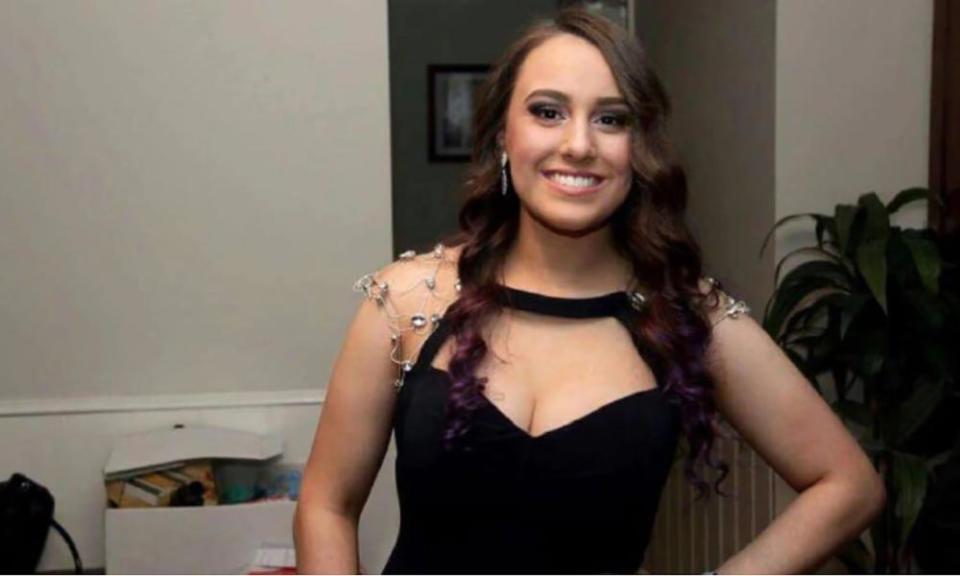'Nothing short of miraculous': the long road ahead for injured survivors of White Island

As families of the Australian survivors of the New Zealand volcano disaster wait anxiously on their loved ones’ prognosis, there will be a small comfort in knowing that some of the world’s best plastic surgeons and burns specialists will lead their care as they return home for treatment.
Specialist paramedics travelled to New Zealand as part of a medical evacuation team to accompany patients on their return, with 11 Australians flown to major burns units throughout the country including Concord hospital in Sydney and the Alfred hospital in Melbourne. More patients were expected to arrive on Friday evening.
Brian Dallow, in Adelaide, learned the devastating news on Thursday that the body of his son, lawyer Gavin Dallow, 53, had been found by search teams. New Zealand police also told him that his granddaughter, Zoe Hosking, 15, was presumed dead, though her body had not been found.
They were the husband and daughter of senior Santos engineer Lisa Dallow, 48, who arrived at the Alfred’s burns unit on Thursday evening, where she remains in a critical condition.
Related: White Island volcano: six bodies recovered in military operation
It was too soon for Dallow to comprehend what was ahead for his daughter-in-law. “All we know is she’s in there and severely burned,” he told Guardian Australia.
“Her brother and her mother are in Melbourne so she will have some support there. So she would be able to go and stay with her parents when she gets out, but that’s a long way off.”
Dr Heather Cleland is a plastic surgeon and director of the Victorian Adult Burns Unit at the Alfred, and will lead the extensive team managing the care of the New Zealand burns patients. She is world-renowned for her expertise and told Guardian Australia that a challenge for surgeons would be finding enough skin for the multiple grafts the severe burns patients would likely need.
A severe burn is considered any burn to more than 20% of the body.
“Once a burn is that size you get the effects of skin damage and loss of it as a barrier function, but it affects other organ functions as well,” she said. “Patients become very unwell and need a lot of supportive care, as well as surgery to remove damaged skin and to replace that with skin that will heal the wound.
The consequences go on for a very long time. It’s not a matter of treating the burn and then it’s all over.
Geoffrey Sussman
“Generally speaking we are very reliant on taking grafts from non-burned skin, and in somebody with a major burn, getting up around 40 to 50% of their body, it is very difficult to find enough skin for grafting. So they often need multiple trips to surgery for different procedures and multiple skin grafting procedures separated by a few weeks. Patients can be in hospital for weeks or months during the acute stage.”
Many of the victims received burns to more than 80% of their body. Australia sent 20,000 square centimetres of allograft skin to help survivors being treated in New Zealand, with other countries including the US also sending supplies. Allograft skin is collected from deceased donors, and is then cyropreserved. There is a chance a recipient’s body will reject the donor skin.
Cleland said that once patients moved beyond the acute phase, there would be time off work or total loss of employment, along with extensive travel for follow-up appointments with medical practitioners including psychologists, physiotherapists and infections specialists. There would be scar and wound management to learn, as well as costs for wound dressings.
Related: 'Absolutely heartbroken': families mourn White Island's victims
“People and their families suffer even with relatively small burns,” she said. “These injuries can have significant ramifications for a person who was in good health and working.”
Fundraising pages have been established to help families prepare for the significant cost of care that may be ahead. The Browitt family, from Craigieburn in Melbourne, were holidaying on a cruise when they arrived at White Island. A GoFundMe page set up by family friend Steven Galea reads:
“Whilst the mother Marie stayed behind on board the ship, her husband Paul and two daughters Stephanie and Krystal were on the island when the volcano erupted.”
Paul is among those now being treated at the Alfred. Krystal is yet to be found and listed as missing. Stephanie remains in a coma in New Zealand, her mother at her bedside.

“This is a nightmare and they’ve been living it,” Galea told AAP. “She (Marie) is not coping. Who copes with this? No one. You just try to get through it. Four people went on a plane and three came back.
“Questions like, ‘What do you need?’ are met with, ‘I need my family alive’. How do you respond to that?”
Associate Professor Geoffrey Sussman, a wound healing specialist with Monash University, said one issue exacerbating the burns was that ash, steam and smoke were also involved.
“So when you breathe in steam and smoke of up to 300 degree temperatures, the lungs and breathing are affected as well,” he said. “The burns we are talking about from the New Zealand incident are also full thickness burns right down into muscle – even beyond that into tendon and bone. The results are quite horrendous.
“But the group Heather Cleland leads is incredible and we are so lucky we have her and some of the most outstanding specialists in the world to support these people. I have the greatest respect for burns surgeons, the ways they can reconstruct areas and solve what seem like insurmountable problems is nothing short of miraculous.”
He said chronic wounds and scarring would likely be an issue for patients in the later stages of recovery. A compression suit may be needed for many of the patients, he said, as it minimises the scarring and risk of what is called a contracture, which is a scar that’s hard and rigid and, if it occurs on a joint, can make it difficult and painful for the patient to move.
“These patients are going to need psychological support, they will need social work support it will be a whole range of services that they are going to need and there is no doubt that that’s one of the major issues [with] serious burns,” Sussman said. “The consequences go on for a very long time.
“It’s not a matter of treating the burn and then it’s all over. There will be dressings, bandaging, special compression garments, certainly special moisturiser and treatments for skin. Medicare will cover the medical costs but unfortunately wound treatments are not covered. If you need dressing and things like that families have to pay.”

 Yahoo News
Yahoo News 
